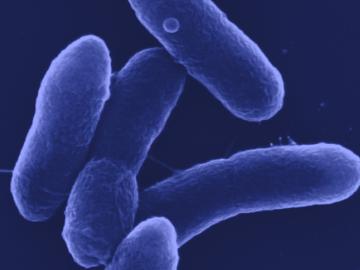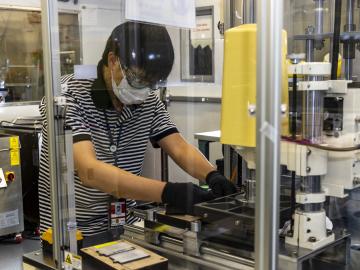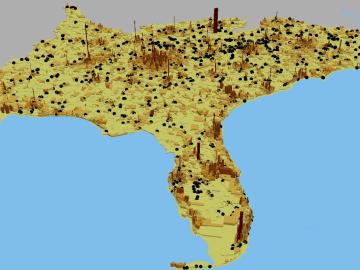
Filter News
Area of Research
- (-) Biology and Environment (30)
- (-) Energy Science (38)
- (-) National Security (3)
- Building Technologies (1)
- Computational Biology (1)
- Computational Engineering (2)
- Computer Science (4)
- Electricity and Smart Grid (1)
- Fusion and Fission (1)
- Materials (3)
- Materials for Computing (4)
- Mathematics (1)
- Neutron Science (4)
- Quantum information Science (2)
- Sensors and Controls (1)
- Supercomputing (18)
News Topics
- (-) Artificial Intelligence (3)
- (-) Bioenergy (12)
- (-) Computer Science (8)
- (-) Energy Storage (19)
- (-) Environment (34)
- (-) Grid (7)
- (-) Mercury (3)
- (-) Summit (2)
- 3-D Printing/Advanced Manufacturing (24)
- Advanced Reactors (1)
- Big Data (4)
- Biology (22)
- Biomedical (4)
- Biotechnology (5)
- Buildings (11)
- Chemical Sciences (1)
- Clean Water (6)
- Composites (5)
- Coronavirus (2)
- Critical Materials (3)
- Cybersecurity (3)
- Exascale Computing (1)
- Fusion (1)
- High-Performance Computing (7)
- Materials (19)
- Materials Science (7)
- Mathematics (1)
- Microscopy (1)
- Nanotechnology (2)
- National Security (4)
- Neutron Science (3)
- Nuclear Energy (1)
- Polymers (3)
- Quantum Science (1)
- Security (2)
- Space Exploration (1)
- Statistics (1)
- Transportation (16)
Media Contacts

Deborah Frincke, one of the nation’s preeminent computer scientists and cybersecurity experts, serves as associate laboratory director of ORNL’s National Security Science Directorate. Credit: Carlos Jones/ORNL, U.S. Dept. of Energy

A research team led by Oak Ridge National Laboratory bioengineered a microbe to efficiently turn waste into itaconic acid, an industrial chemical used in plastics and paints.

Esther Parish is one of eight scientists from the Department of Energy's Oak Ridge National Laboratory talking to students in nine schools across East Tennessee as part of National Environmental Education Week, or EE Week.

In his career focused on energy storage science, Jianlin Li has learned that discovering new ways to process and assemble batteries is just as important as the development of new materials.

Through a consortium of Department of Energy national laboratories, ORNL scientists are applying their expertise to provide solutions that enable the commercialization of emission-free hydrogen fuel cell technology for heavy-duty

Rich Giannone uses bioanalytical mass spectrometry to examine proteins, the primary driver in biological systems.

An analysis published in the Proceedings of the National Academy of Sciences and led by researchers from the U.S. Department of Energy’s Oak Ridge National Laboratory has received the 2021 Sustainability Science Award from the Ecological Society of America.

Scientists at Oak Ridge National Laboratory have devised a method to identify the unique chemical makeup of every lithium-ion battery around the world, information that could accelerate recycling, recover critical materials and resolve a growing waste stream.

The Accelerating Therapeutics for Opportunities in Medicine , or ATOM, consortium today announced the U.S. Department of Energy’s Oak Ridge, Argonne and Brookhaven national laboratories are joining the consortium to further develop ATOM’s artificial intelligence, or AI-driven, drug discovery platform.

Oak Ridge National Laboratory was among an international team, led by Lawrence Livermore National Laboratory, who synthesized 108 elevated carbon dioxide, or CO2, experiments performed in various ecosystems to find out how much carbon is


